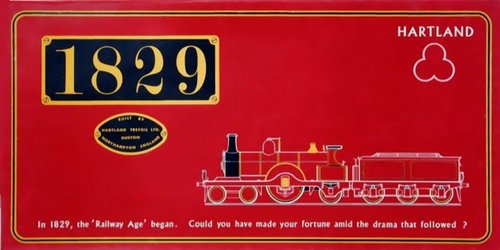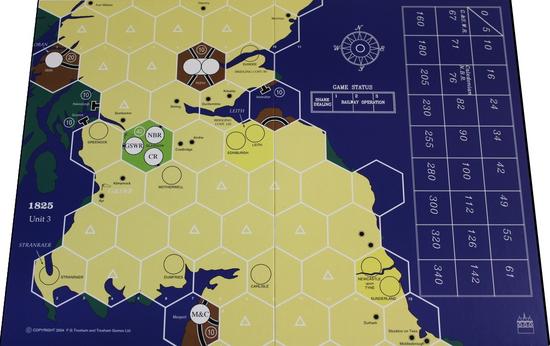If you are a serious game player, you may have heard of the 18xx railroad games such as 1830, 1870, or 1825, but you probably have not played one. I really enjoy them and I’d like to give you a short introduction to them.

In these games, the players invest in railroad companies. The player with the most shares in a company runs that company as president. They can choose to build tracks, buy trains, run those trains for revenue and decide to pay that revenue to the stakeholders or keep it in the company. The company stock goes up when the company pays out and down when it doesn’t. In some games, the stock also goes down when shares are sold. The winner is the one who finishes with the most assets (stocks + cash). The only luck in the game is in selecting the starting player.

Each game is played on a different map board (usually part of Europe or the US) and the title represents an important year in railroad development for that region. Each game also has a slightly different balance in play. Some games can be won with excellent railroad operations, while others require complicated stock market manipulation. Whatever your tastes, you can certainly find a game that fits. All of this leads to a game where the players are faced with a lot of interesting decisions, and if one game becomes old, there are many more to try.


Unfortunately, all of this comes with a few drawbacks. The games can be quite long – typically four hours and for some games (like 1870) as long as eight. In addition, with no luck, new players are at a serious disadvantage to experienced players. No luck also means that the replay for a particular game can be somewhat limited as players tend to settle on a few fixed strategies for each company.
Even with all of these disadvantages, the games can be quite interesting and intense, and in recent years, several games have been developed to try to shorten the game and make learning the system much easier for newer players. One such game is 1825.



Recently, BJ and I played two games of 1825 – Unit 3. Unit 3 covers part of Scotland and is unusual for an 18xx game as it is specifically for two players. The game is heavily focused on train operations and the board is very small, making interactions between the companies a very critical part of the game. Each part of the game fits closely with the others and there is a constant feeling of having not quite enough money to do everything that needs to be done. All of this made for a fun and well balanced game.
Unfortunately, the game is still a bit long, more than 6 hours on the first play and slightly less than four on the second. I think a third game would be much closer to the 2 hours advertised on the box. We could also see that the replay value of the game starting to decline after our two plays. In two or three more games, we will have settled into a few fixed strategies. We were also a bit disappointed by the quality of the components. In particular, the rules were not well written, and a few critical player aids needed to be downloaded from the Internet.
Nevertheless, I would recommend this as a good introduction to 18xx. It captures the most important elements of the series in a very tight and fun package. We really enjoyed both games we played, and the competition was quite tight with the final game being decided by only £100 (out of ~£4000). I do recommend learning from an experienced player, so if you’re interested, let BJ or I know. We’d love to play again.